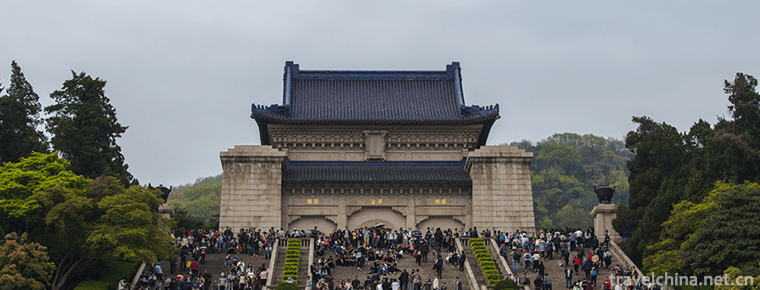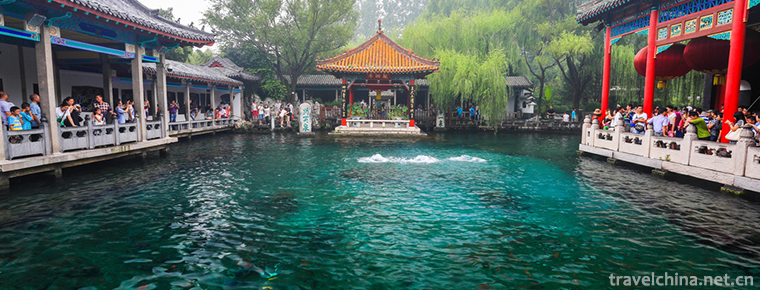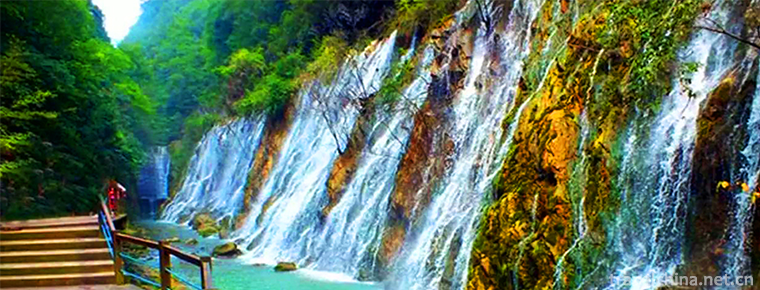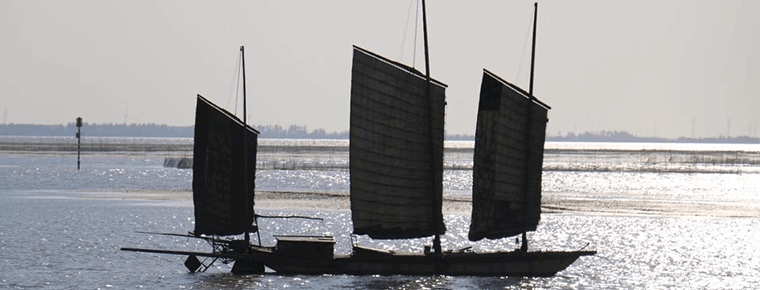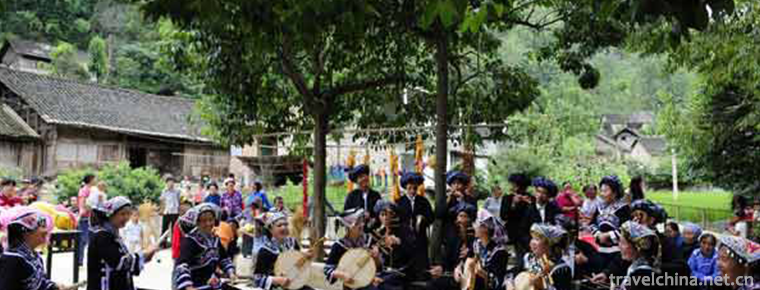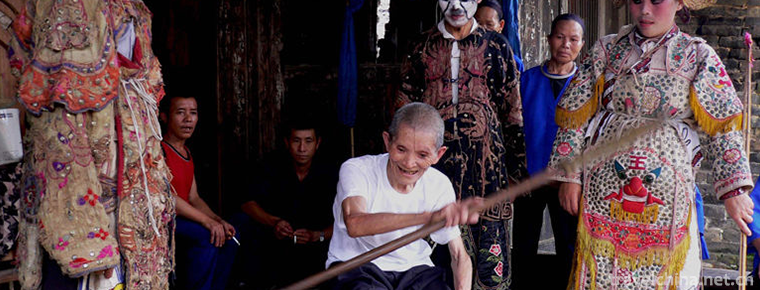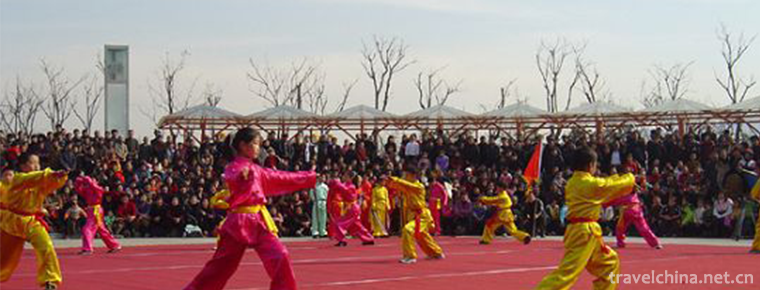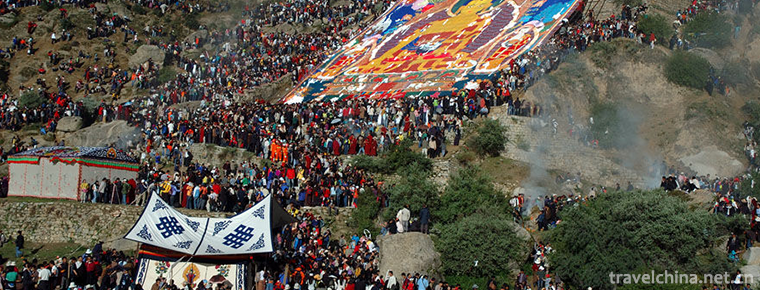Penglaige tourist area
Penglaige Scenic Area, located in Danya Mountain, northwest of Penglai City, Shandong Province, is a national AAAAA-level tourist attraction with an area of 18,500 square meters. Penglai Pavilion was built in Jiayou 6 years (AD 1061) in the Northern Song Dynasty. It is also known as the "Four Famous Buildings in China" together with Yellow Crane Tower, Yueyang Tower and Tengwang Pavilion.
Penglai now has well-known national key cultural relics protection units at home and abroad, such as Penglai Shuicheng, Penglaige and Qi Jiguang's hometown. It has been designated as a national scenic spot by the State Council. In 2000, it was named "China's Excellent Tourist City". Penglaige's scenic spot has been rated as a national A-level scenic spot. Today, Penglai has developed into a "eating" scenic spot. Six modern seaside scenic tourist cities with sound functions, namely, housing, transportation, travel, shopping and entertainment, receive 2 million Chinese and foreign tourists every year.
Penglai Pavilion, a national 5A-level tourist attraction, was first built in Jiayou 6 years (AD 1061) in the Northern Song Dynasty. It is also known as the "Four Famous Buildings in China" along with Huanghe Tower, Yueyang Tower and Tengwang Pavilion. Penglai Pavilion was built in Jiayou 6 years (AD 1061) by Penglai Pavilion, Tianhou Palace, Longwang Palace, Luzu Palace, Sanqing Palace and Penglai Pavilion. It is also known as the "Four Great Buildings of China" along with Huanghe Pavilion, Yueyang Pavilion and Tengwang Pavilion. Six monasteries and ancillary buildings, including Mituo Temple, form a large-scale ancient building complex with an area of 18,500 square meters.
Penglai is known as a fairyland on earth. Legend has it that Penglai, Yingzhou and Abbot are three immortals in the sea. They live in the place where the immortals live. It is said that eight immortals, Lu Dongbin, Tieguai Li, Zhang Guolao, Han Zhongli, Uncle Cao, Hexian Gu, Lancai and Han Xiangzi, are traveling and drifting in Penglai Pavilion after being drunk and relying on their own treasures. The beautiful legend of "Eight Immortals Crossing the Sea, Each Showing His Ability" is left behind.
Penglaige was founded in Jiayou period of Northern Song Dynasty. It has a history of more than 900 years. After expansion in Ming Dynasty, it was rebuilt in Qing Dynasty. Now it has become a magnificent building complex with an area of more than 32000 square meters, temples and gardens. It mainly consists of Luzu Palace, Penglai Pavilion, Sanqing Palace, Tianhou Palace, Dragon Palace, Mituo Temple and other buildings. Penglaige, the main building, is situated on the top of Danya Cliff, where the stars are arched by the moon. With Teng Wang Pavilion, Yueyang Tower, Yellow Crane Tower.
On both sides of Penglai Pavilion, there are Guanlan Pavilion, Binri Tower, Wind Shelter Pavilion, Bedding Pavilion, Jiang Gong Temple and other buildings. There are shelters and Tianhuangshan on the west side of the pavilion. Tianhengshan, also known as Dengzhou Cape, is the southern starting point of the boundary between the Yellow Sea and the Bohai Sea. It is said that Tianhengshan 500 strong men built camps and villages in the north, facing the sea. The cliffs cut like a tangent. New scenic spots such as Tianhengshan Cultural Park, Tianhengdian Road and the boundary coordinates between the Yellow Sea and the Bohai Sea are well-known for their marine parks. The shelter is also known as Haishi. To the east of the pavilion is the Beibuting Pavilion and Sugong Temple. The ancestral hall was built in memory of Su Shi. There are stone carvings in it. The walls are full of poems and inscriptions. In the east of the temple, there are Binri Tower, Puzhao Tower and Guanlan Pavilion, which are good places to watch the sea and the sunrise. There is a fairy bridge behind the pavilion, which is passed down to the place where eight immortals cross the sea. The front of Penglai Pavilion on the East is Baiyun Palace. Its main building is Sanqing Palace. There are three gods in the main hall. The east of Sanqing Palace is Lv Zu Palace. Mituo Temple is an independent building in the south of the mountain. Penglai Water City in the eastern part of the Pavilion is one of the earliest ancient military ports in China. It controls the sea from a negative hill. It has watergates, wharfs, forts and other seaports and military buildings. It is listed as a national key cultural relic protection unit together with the Pavilion. Penglaige has always been a place for literati to gather elegantly, and now there are more than 200 stone carvings.
The main building Penglai Pavilion is in the middle of the rear, built in the Northern Song Dynasty, expanded in the Ming Dynasty, rebuilt in the Qing Dynasty, 15 meters high, situated in the north facing the south, double-decked wooden structure, 14.8 meters long at the bottom, 9.65 meters deep, four-sided corridor. At the bottom of the pavilion, there are 16 big red dovetail pillars, and at the top of the pavilion, there is a delicate corridor which can be overlooked by tourists. The original poems, inscriptions and paintings left over from the past dynasties on the interior wall are not available today. They are now designated as "the exhibition room for Party and state leaders to visit the photographic materials of Penglaige Pavilion". The "Penglai Pavilion" tablet written by Tiebao, a famous calligrapher in Qing Dynasty, is located in the north wall of the Cabinet. It has a strong font, survives after the robbery, and is precious with its auspicious feathers. Dong Biwu's inscribed poems and Ye Jianying's inscribed couplets hang on the West wall. Indoor wooden beams and columns are painted with "Penglai Ten Sceneries", "Eight Immortals" and "Fengzhu" patterns. Around the eight immortal tables and chairs, the central sculpture is the "eight immortals drunk" group sculpture. It is based on the legend of "eight Immortals crossing the sea" in Penglai Pavilion, where the eight immortals wander on the surface of the pavilion, and after drunkenness, they show their gods roaming across the sea. It's a good place to take photos for visitors.
Qi Jiguang (1528-1588), born in Dengzhou, Shandong Province (now Penglai), was a famous general in the Ming Dynasty, an outstanding military strategist and a great national hero in Chinese history. Qi Jiguang was born as a gatekeeper and received good education in culture and military knowledge from an early age. He devoted himself to the front line of coastal anti-Japanese war for more than 10 years, supervised the manufacture of new weapons, created new battlefield methods, created the famous Qi family army, swept away the Japanese aggressors in the Southeast coast, and made the rumors of southern and Northern Japan cowardly. Qi Jiguang is also one of the outstanding military theorists in ancient China. He wrote military works such as Ji Xiao Xin Shu and Practice Records in Rong Ma Li's trance. His poems and essays collected in Zhi Zhi Tang Ji are quick in thinking and fluent in writing, leaving behind such famous sentences as "I wish Hai Boping had a non-self-conscious feudal style".
On December 7, 1588, the fifteenth year of Wanli, Qi Jiguang, a famous general and great national hero, died in his hometown, Penglai. To commemorate him, the people of Penglai built Qi Jiguang's hometown, which preserved Qi's archways and ancestral temples and other provincial key protected cultural relics.
Penglai Pavilion is situated on the top of Danya Cliff tigers, with clouds supporting waves, and beautiful scenery. It consists of Penglaige, Tianhou Palace, Longwugong, Lvzu Palace, Sanqing Palace, Mituo Temple and its ancillary buildings, covering an area of 18,900 square kilometers. Cabinet literati ink, couplets of stone carvings, dazzling. Penglai Water City in Gedong is one of the earliest ancient military ports in our country. It controls the sea by negative mountains. It has watergates, wharfs, forts and other seaports and military buildings. It is listed as a national key cultural relic protection unit together with Penglai Pavilion. Gexitian Hengshan, also known as Dengzhou Headland, is the southern starting point of the boundary between the Yellow Sea and the Bohai Sea. It is said that Tianheng 500 strong men built camps and villages in the north, facing the sea. The cliff is like a cut. New scenic spots such as Tianhengshan Cultural Park, Tianhengdian Road and the boundary coordinates between the Yellow Sea and the Bohai Sea are well-known for their marine parks. Penglaige West to a kilometer of Xiyuan tourist attraction, north of the Bohai Sea, and across the sea from Changshan Island, verdant trees, deep valleys, quiet beaches, rich seafood. Today, there are more than 20 scenic spots, such as crocodile hall, hunting ground, fisherman village, fishing platform and Jinxiu Valley. They are divided into five scenic spots: marine treasure-collecting area, folk custom area, mountain forest and wild interest area, sightseeing agriculture area and ecological landscape area. They are ideal places for rest and vacation and return to nature.
Tourism information
The coastline of Penglai is 86 kilometers long, with Bedrock Coast and sandy coast, and beautiful scenery of mountains and seas. About 8 kilometers east of Penglai Pavilion, the beach is clean and the water is clear and the waves are small. It is an ideal resort for recreation and vacation. Now a wide coastal sightseeing road has been built from the coast of Penglai Pavilion to the east. On both sides of the main road, seaside parks, bathing grounds, Baxian stone carvings and seaside squares have been built, thus forming a seaside green sightseeing area. Belt, decorated with various stone carvings and sculptures, the scenery is refreshing and pleasant, for people to visit and rest, vacation.
Best season: July-September is the best time to play in Penglai Pavilion. Penglai is a summer resort and tourist attraction. Every summer, many people come here to spend their holidays.
Suggested Play: 2-3 Hours
Tickets: 140 yuan (including tickets to Penglaige, Qi Jiguang's hometown, Shuishi House, Guchuan Museum, Tianhengshan, Gunwar City, Weekly Cinema and Dengzhou Museum)
Opening time: peak season (April-October): 06:00-18:30 off-season (November-March): 07:00-17:00.
Self driving route:
1, Beijing - Penglai
(1) Minute Temple in Beijing (South Third Ring) -- Jinglu Expressway -- Huangshi Expressway (Huanghua direction) -- Rongwu Expressway -- Weiwu Expressway -- Penglai Xixia.
(2) Beijing-Beijing-Tianjin-Tanggu Expressway-Tianjin Yangcun-Beijing-Shanghai Expressway-Jiqing Expressway-Weilai Expressway-Weiwu Expressway-Penglai Xixia Expressway-straight to Penglai City.
2. Harbin - Penglai: Harbin - Changchun - Shenyang - Dalian - Yantai (ferry 6 hours) - Yantai - Penglai.
3. Shanghai-Penglai: Shanghai-via Jiangyin, Jiangdu-Huaian-Guanyunbei-Rizhao-Tongshan Expressway (Qixia-Beixia-Xia Expressway) -Penglai.
4. There are long-distance buses to Yantai, Qingdao and Jinan at Penglai Long-distance Bus Station, and ships to Long Island and Lushun at ports.
Bus route
1. There is a taxi to Yantai Long-distance Station at the airport. Take the Yantai Tourist Express to Penglai Bus Station. Get off and walk west for five minutes to Penglaige Zhenyang Ticket Office.
2. Take the Yantai Long-distance Bus Station by Tobacco Pot Express. It runs in 15 minutes. The fare is 18 yuan. It runs in 1 hour and 10 minutes.
3. Take bus routes 1, 2, 3, 4, 5, 6, 7 and get off at the bus stop or at the gate of the scenic spot opposite 01
There are buses and passenger and cargo rolling flights to Lushun and Dalian on highways and ports. Railway and air transport are mainly dependent on Yantai Railway Station and Yantai Airport 70 kilometers away from Penglai. The nearest tourist city to Penglai is Yantai. Buses and Chinese buses come and go every 20 minutes, which is very convenient. Penglai, across the sea from Changshan Islands and Dalian, has opened a shipping route and set sail at a fixed point. For caution, tourists should book tickets in advance. Penglai Shuicheng is one of the most complete ancient military ports preserved in our country so far. It is magnificent and magnificent, which reflects the Penglai Pavilion. It has watergates, wharfs, forts and other seaports and military buildings. It is a national key cultural relics protection unit.










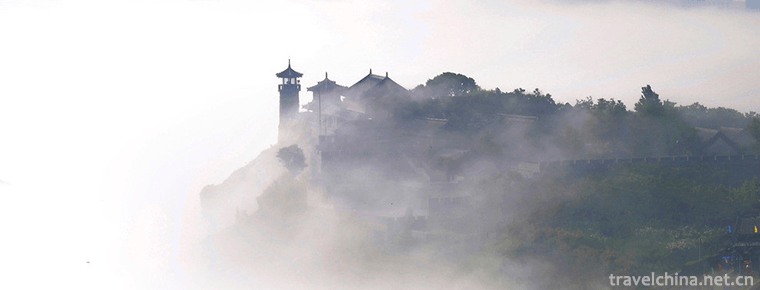
-
Shanghai Science and Technology Museum
Shanghai Science and Technology Museum is a comprehensive natural science and technology museum with Chinese characteristics, times characteristics and Shanghai characteristics.
Views: 509 Time 2018-12-05 -
Zijin Mountain Scenic Area
Zhongshan Scenic Spot, or Zhongshan Scenic Spot for short, is located in Zijin Mountain, Xuanwu District, Nanjing City. It is a famous scenic spot in China.
Views: 153 Time 2018-12-06 -
Jinan World First Spring Scenic Area
Jinan World No. 1 Spring Scenic Area, located in the center of Jinan City, Shandong Province, is a national AAAAA-level tourist attraction, national key park, advanced unit of national spiritual civil.
Views: 186 Time 2018-12-08 -
Zhongba Grand Canyon Scenic Area
Shiquan Zhongba Grand Canyon is located in the southern side of the Hanjiang River in Shiquan County, Shaanxi Province. It is 20 kilometers away from the county town.
Views: 133 Time 2018-12-22 -
Beijing Hangzhou Grand Canal
Beijing-Hangzhou Grand Canal is the longest and largest ancient canal in the world. It is also one of the oldest canals. It is called three great projects in ancient China together with the Great Wall.
Views: 147 Time 2018-12-22 -
Zhaozhou Bridge
Zhaozhou Bridge, also known as Anji Bridge, is situated on the Juanhe River in Zhaoxian County, Hebei Province. It spans more than 37 meters across the river. Because all the bridges are built of ston.
Views: 178 Time 2019-03-17 -
Buyi Eight tone Sitting Singing
Buyi eight-tone sitting-singing, also known as "Buyi eight-tone", is a form of folk music and singing handed down from generation to generation by the Buyi people.
Views: 108 Time 2019-04-04 -
Dagudarengrab
Dagudalenglei Biao is the only Creation Epic discovered, sorted out and published by the De'ang people up to now. It is more than 1200 lines long. The epic is different from.
Views: 391 Time 2019-04-22 -
Dong Opera
Dong Opera, one of the national intangible cultural heritage, is a local traditional drama in Liping County, Guizhou Province, Tongtong Dong Autonomous County, Hunan Province and Sanjiang Dong Autonom.
Views: 208 Time 2019-04-27 -
Hakka ancient prose
As early as the late Ming Dynasty and early Qing Dynasty, Hakka ancient prose had been formed, mainly distributed in Gongjiang Town, Xinpi Township, Kuanta Township, Zishan Town, .
Views: 156 Time 2019-05-09 -
Meishan Wushu
Meishan Wushu is a traditional school of Wushu which is spread in Hunan Province. Xinhua is an ancient and magical land. It has not only nurtured many historical celebrities, but also cultivated Meish.
Views: 110 Time 2019-06-03 -
Sho Dun Festival
The Shirton Festival is a traditional religious festival of Tibetan people in Tibet, Qinghai, Gansu, Sichuan, Yunnan and other provinces and regions. It is mostly held in early February, mid-April or .
Views: 167 Time 2019-07-09

